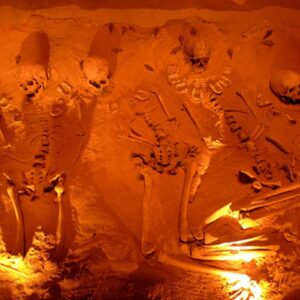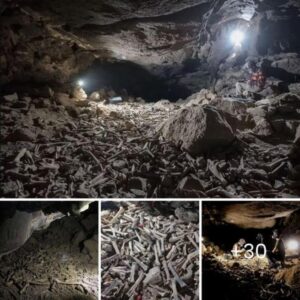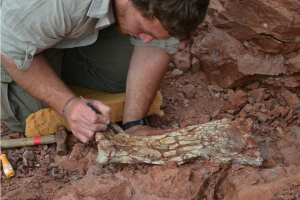
A palaeontologist works on excavation of bones and fossils that belonged to a newly discovered species of pterosaurs, Thanatos drakon Amaru, in Aguada del Padrillo, Mendoza, Argentina August 9, 2012. Picture taken August 9, 2012. Leonardo Ortiz David – Universidad de Cuyo/Handout via REUTERS Acquire Licensing Rights
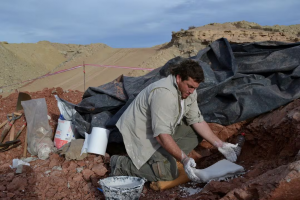
Argentine scientists discovered a new species of a huge flying reptile dubbed “The Dragon of Death” that lived 86 millions of years ago alongside dinosaurs, in a find shedding fresh insight on a predator whose body was as long as a yellow school bus.
The new specimen of ancient flying reptile, or pterosaur, measured around 30 feet (9 meters) long and researchers say it predated birds as among the first creatures on Earth to use wings to hunt its prey from prehistoric skies.
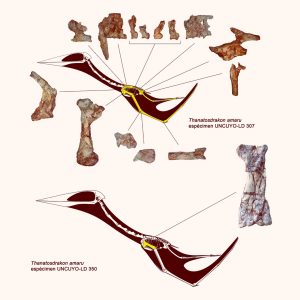
The team of paleontologists discovered the fossils of the newly coined Thanatosdrakon amaru in the Andes mountains in Argentina’s western Mendoza province. They found that the rocks preserving the reptile’s remains dated back 86 million years to the Cretaceous period.
The estimated date means these fearsome flying reptiles lived at least some 20 million years before an asteroid impact on what is now Mexico’s Yucatan peninsula wiped out about three-quarters of life on the planet about 66 millions years ago.
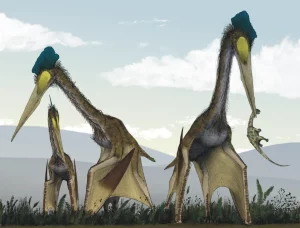
Project leader Leonardo Ortiz said in an interview over the weekend that the fossil’s never-before-seen characteristics required a new genus and species name, with the latter combining ancient Greek words for death (thanatos) and dragon (drakon).
“It seemed appropriate to name it that way,” said Ortiz. “It’s the dragon of death.”

The reptile would likely have been a frightening sight. Researchers, who published their study last April in the scientific journal Cretaceous Research, said the fossil’s huge bones classify the new species as the largest pterosaur yet discovered in South America and one of the largest found anywhere.
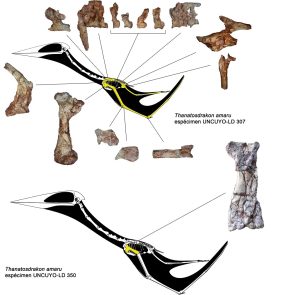
“We don’t have a current record of any close relative that even has a body modification similar to these beasts,” said Ortiz.
Reporting by Horacio Soria and Miguel Lo Bianco; Writing by Brendan O’Boyle; Editing by David Alire Garcia and Sandra Maler



